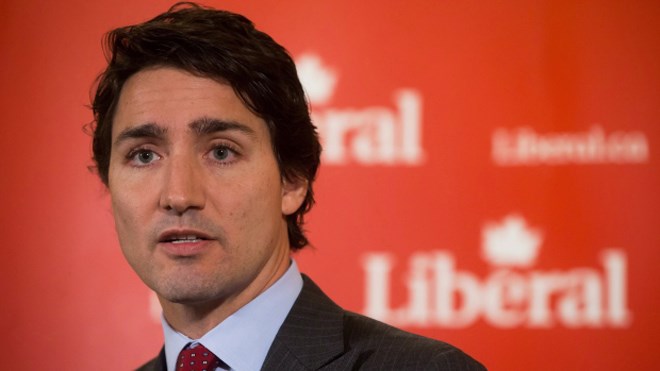The 2016 federal budget is highlighted by large deficits and a sizable commitment to infrastructure spending.
Finance Minister Bill Morneau's first budget forecasts a $29.4 billion deficit in 2016, and $29 billion next year.
This budget focuses largely on infrastructure spending, a new tax-free child care benefit, as well as more money for First Nations people.
Post-secondary students will see a 50 per cent increase in grant funding, up to $3,000 for low-income students, and $1,200 for middle-income students.
First Nations will receive $8.4 billion over the next five years, with more than 30 per cent being allocated to primary and secondary education on reserve communities. Other funds will be used for drinking water and housing, along with family and child services.
"This is historical funding," said Sudbury MP Paul Lefebvre. "This funding for education will finally close that gap because the Aboriginal population wants to be part of the economy and now with closing the education and economic gap it makes a huge difference for us in Northern Ontario. I think it's a great way for us to start the dialogue with our First Nations partners."
In the next two years, $500 million has been allocated to improve First Nations housing and another $225 million for on-reserve infrastructure.
Canada's infrastructure as a whole gets a whopping $120 billion over 10 years, with the early focus (or phase one) on public transit, water, waste management and housing infrastructure.
The latter phase of infrastructure spending will be broader and will be focused on the government's goal of shifting to a low-carbon economy.
A new tax-free Canada Child Benefit starting July 1 will increase payments for most Canadians with children, simplify the tax code and offer greater assistance to lower-income families.
It replaces both the income-tested tax-free Canada Child Tax Benefit and the Universal Child Care Benefit, which was taxable.
Families with incomes under $30,000 will receive the maximum benefit of $6,400 per child under six and $5,400 per child between six and 17, a gain of about $2,500 a year per child.
The new family benefit is a particular point of pride for Lefebvre.
"This is exactly what was in our platform," he said. "We want to make sure that the people that need it, get it. So the people that have a lower income get more, and people with more children get more. It is not a universal child care, it's the people that need the support that have children get the support they need."
As family incomes rise, the benefit will be progressively scaled back, and eliminated entirely for households earning more than $190,000. Tax credits for children's fitness and arts expenses also are being phased out over two years, with maximum eligible expenses cut in half for 2016 and eliminated entirely in 2017.
Single seniors will also see an enhancement in old age security, which will be increased by close to $100 per month.
"When I was out on the campaign trail and talking to seniors and they were saying that they were living on those funds and $100 goes a long way for them," said Lefebvre. "I'm extremely proud that we kept our promise from our platform in this budget for our single seniors." Budget 2016 highlights:
Deficit: $29.4 billion this year, $29 billion the next before falling - but no surplus forecast before the next election.
Debt: Expected to grow by $113 billion by 2020-21, but debt-to-GDP ratio to stay mostly flat at around 32 per cent.
Growth: Deficit based on 0.4% annual growth - much lower than economists predict.
Canada Child Benefit: New monthly tax-free payments starts July 1 to replace UCCB and other tax measures: up to $6,400 a year per child under 6, and $5,400 those aged 6 to 18. But this amount begins to claw back for households with an income over $30,000 and is eliminated entirely for incomes over $190,000.
Tax credits: Children's arts and fitness tax credits phased out by end of 2017. But teachers get a $150 credit for teaching materials.
EI: Changes make it easier to qualify for benefits, and extends benefits for workers in 12 hard-hit regions. Plus: a bigger-than-expected cut in EI premiums next January.
Infrastructure: $120 billion over 10 years, focusing first on public transit, water, waste management and housing infrastructure.
Indigenous Peoples: $8.4 billion over five years, with $2.6 of that to improve primary and secondary education on reserves. Other funding for drinking water and housing, as well as family and child services.
Student grants: Increased 50 per cent to $3,000 for low-income and $1,200 for middle-income students.
Arts: $1.9 billion over five years for arts and culture organizations, including the Canada Council, Telefilm Canada and the National Arts Centre. $675 million to "modernize and revitalize CBC/Radio-Canada in the digital era."
Seniors: Guaranteed Income Supplement increased by up to $947 annually.
Veterans: Reopens nine service offices, increases amounts payable to injured veterans and indexes some benefits to inflation.
